Excavating Haitian Histories

This is the fifth piece in a series on the Plantationocene—a proposed alternate name for the epoch often called the Anthropocene. The Plantationocene Series aims to create a conversation about multiple forms of plantations, both past and present, as well as the ways that plantation logics organize modern economies, environments, and social relations.
Place as Palimpsest / Yon kote tankou Palimpseste is the title of my 30-foot drawing. It is a visual exploration of the vestiges of history as located in the geology of Cap Haitien, North Haiti.
This drawing is an exploration of place and meaning in contemporary Cap Haitien, a continuation of my 2010 exhibition, Black Gold: Playing with Oil, which addressed the earth’s geological stratification in relation to the effects of twenty-first century oil exploration, followed by my 2013 exhibition, How the Light Enters, on life in the wake of the 2010 Earthquake in Haiti.

Kwynn Johnson discusses Place as Palimpsest / Yon kote tankou Palimpseste. Photo courtesy of the artist, 2017.
Conceptually, place, like a palimpsest, changes with erosion as well as with the build-up of layers of soil and memory over time. Place is seen as an archive in which each layer of the earth houses artefacts or traces from events of history. The imbedded vestiges left in the geology inform my visual representations of history as fossilised in the earth: artifacts from the Taíno (the First People), the colonial plantation and agriculture, Duvalierism from the 1950s, Aristide’s Lavalas movement of the 1990s, and the UN occupation in the twenty-first century.
“A feature of the palimpsest is the sense that earlier inscriptions are never quite erased, for these narrative inscriptions become part of the whole.” –Paula Morgan
In considering the Haitian Revolution within the broader timeline of Cap Haitien, this visual-cultural geography draws from the main themes in Derek Walcott’s play, The Haytian Earth (1984). Walcott’s focus on the life and labor of the peasant on the plantation offered a way to thematically connect to the other geological “layers” in this spatial palimpsest. With the kind permission of Walcott, I use the 42 scenes which make up Acts I & II of The Haytian Earth to represent an aspect of the colonial period in this drawing. In this way, commodities such as Haitian coffee and rum (made from sugar cane) are symbolically marked with meaning. However, while the inclusion of my own storyboard interpretation of Walcott’s play organically anchors the broader theme of place and time in the composition, it does not overpower, for example, our understanding of the cholera bacteria in the ecology of twenty-first century Haiti.
In this way, place is explored as a layered repository or palimpsest of history and comes to be known by excavating meanings in the present in light of the past. I trace the geology of Cap Haitian to visually articulate some of the key historical, economic, and political events which have left physical and symbolic etchings in the geology. Place as Palimpsest ultimately shows how these events come to be embodied and experienced in the landscape of the present.
Click images to enlarge.
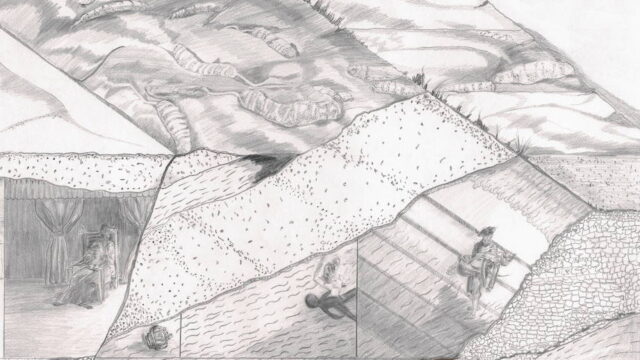
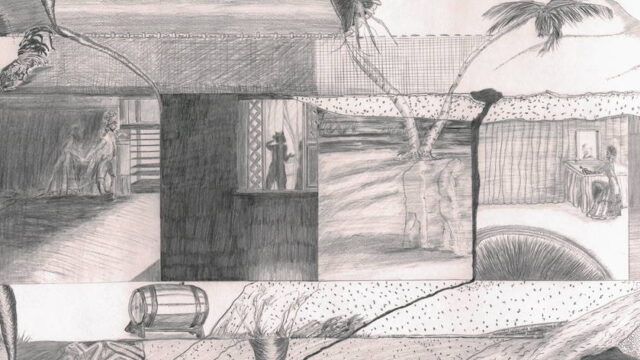
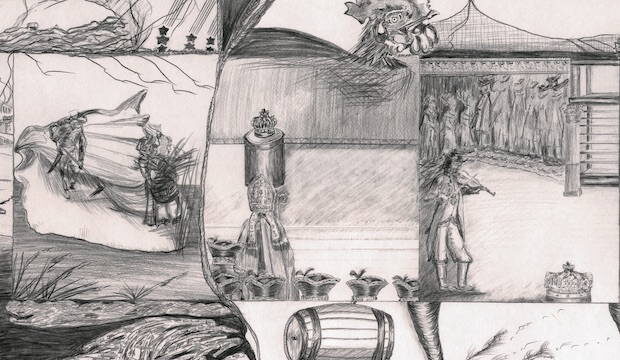

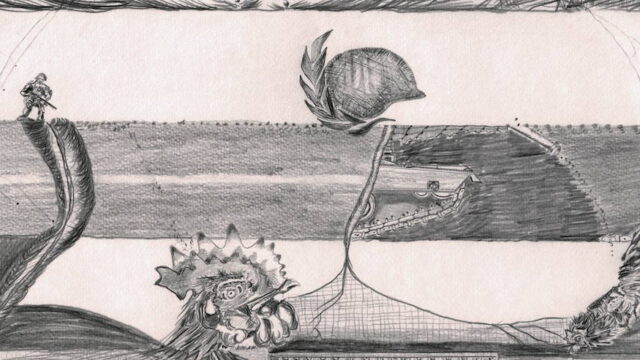
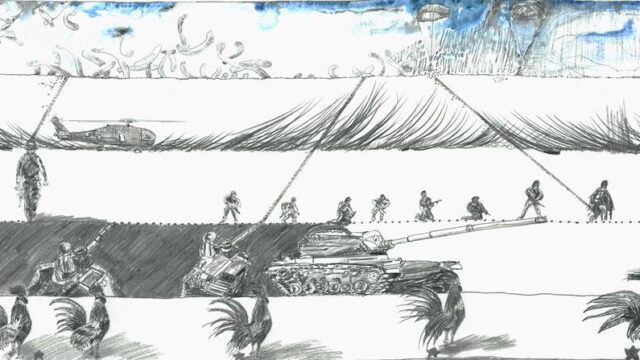
Editor’s note: Portions of this artist statement were previously published by Caribbean Quarterly. Republished with the artist’s permission.
Featured image: Detail of Place as Palimpsest / Yon kote tankou Palimpseste, 2017. 30 feet x 43 inches. Graphite, conté-crayon, and watercolour on 140 lb. cold-pressed watercolor paper. Place as Palimpsest / Yon kote tankou Palimpseste has been exhibited in Trinidad, Jamaica, and Haiti, and at events such as The Haitian Studies Association Conference, the Bocas Literary Festival, and the UWI Seismic Research Centre.
Dr. Kwynn Johnson is a Trinidadian Visual Artist and a Haitian and Cultural Studies Scholar at the University of the West Indies, St. Augustine. Since 2003, Johnson has had eight solo exhibitions. She has also exhibited in several local, regional, and international group shows, in Guadeloupe and New York, and in spaces such as the Alliance Française in Haiti, the Tate Modern in London, several Haitian Studies Association Conferences, and three consecutive editions of the Ghetto Biennale in Port-au-Prince. Contact.
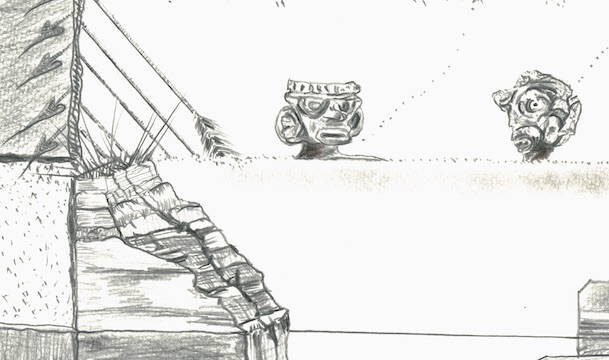
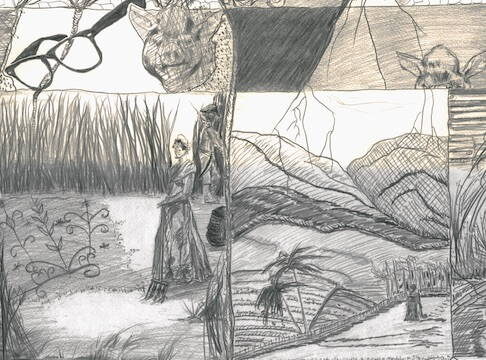
You must be logged in to post a comment.